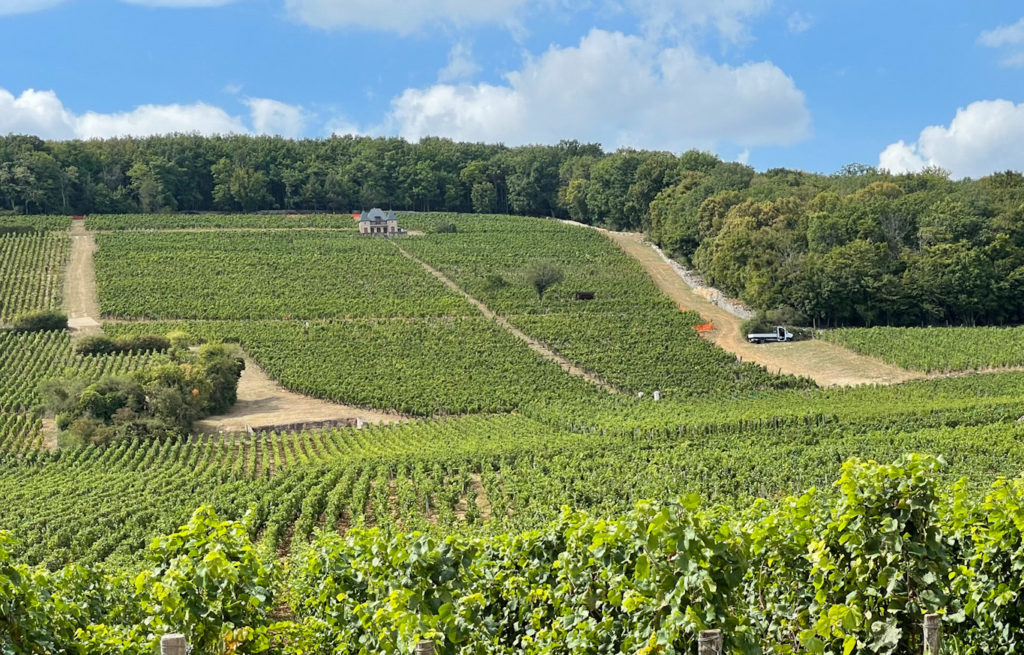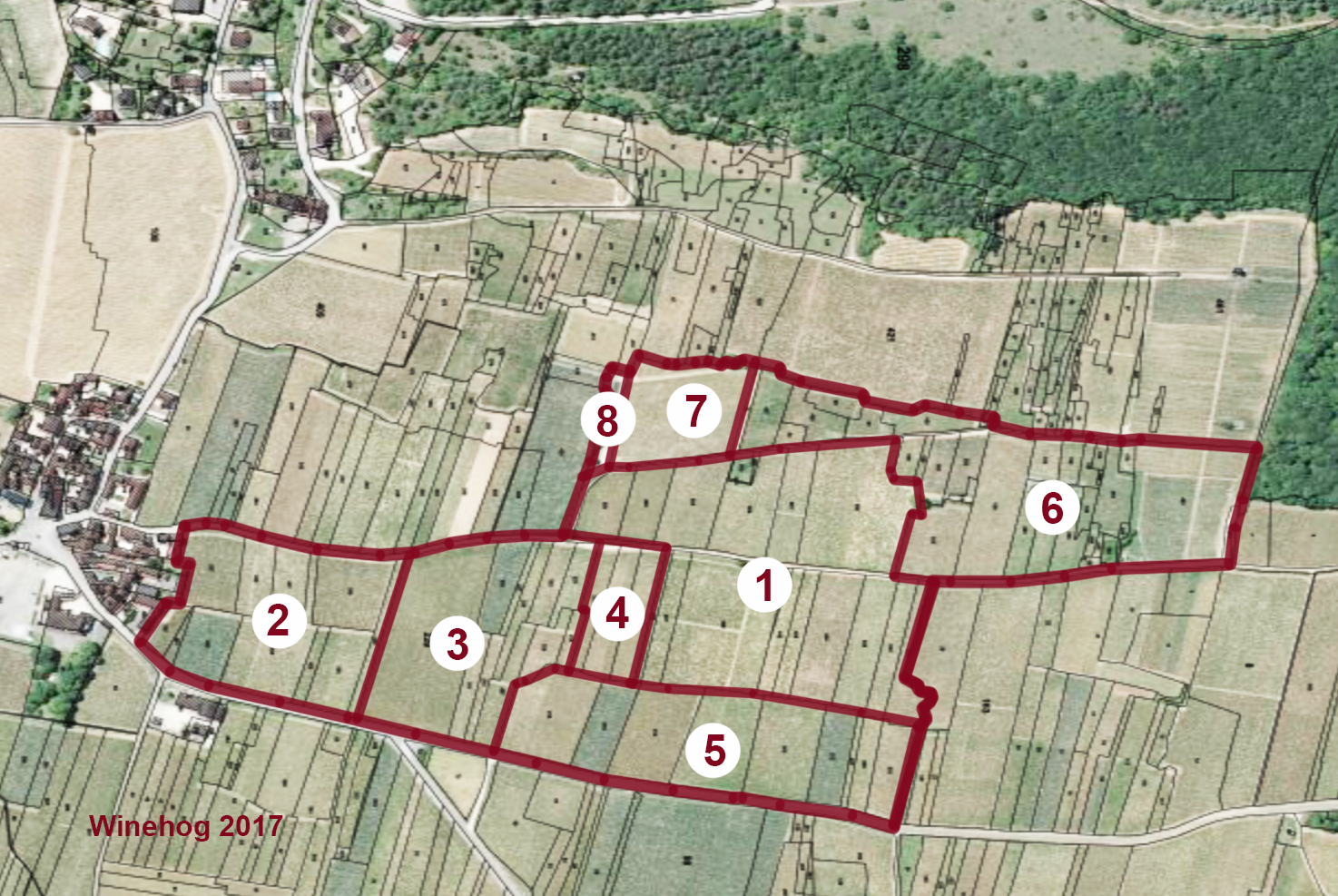Clos de la Roche is the king of Morey-Saint-Denis to many, as well as a vineyard that represents the tradition of the Morey-Saint-Denis appellation.
It is a vineyard dominated by Morey-based producers; the largest is Domaine Ponsot and the second largest, Domaine Dujac.
Domaine Ponsot Clos de la Roche was the first grand cru I acquired when I began collecting Burgundies 30 years or so ago. I began with an ’88 Clos de la Roche Vielle Vignes, and many other vintages have followed since then.
For me, Clos de la Roche from Ponsot is perhaps Morey’s most legendary wine, from both historical and quality perspectives. Give it time and it will reward you.
Let’s take a brief look at the Clos de la Roche vineyard before we go into details of the Ponsot plots.
Clos de la Roche: one name for several vineyards
Clos de la Roche today consists of plots in eight climats located on the northwestern side of Morey-Saint-Denis (map below).
Plots from the following climats are today included in the appellation:
- Clos de la Roche – 4.5740 ha
- Les Chabiots – 2.1475 ha
- Les Fremiéres – 2.3600 ha
- Les Froichots – 0.6410 ha
- Les Mochamps – 2.5120 ha
- Monts Luisants – 3.1100 ha
- Les Genavriéres – 0.8020 ha
- Les Chaffots – 0.0725 ha
Please note only a part of Genavriéres, Chaffots, and Monts Luisants are included in Clos de la Roche; the upper parts of these climats are classified as 1er cru or village and sold under that name: MSD Monts Luisants and Les Genavriéres.
Les Chaffots is even more complex, as a large part of it is also included in Clos Saint-Denis, while the top part produces some excellent 1ers crus.
The total area of Clos de la Roche is 16.9 ha, after at least two expansions over the past 80 years.
Read the full story about the expansion of Clos de la Roche here.
A bit of background on Domaine Ponsot
Domaine Ponsot was created in 1871 by William Ponsot, who came from Saint Romain. He began building his estate in Morey-Saint-Denis by acquiring vineyards in Clos du Monts Luisants and what would later be Clos de la Roche. He also acquired plots in Gevrey-Chambertin Les Combottes and Charmes-Chambertin.
Domaine Ponsot was already in the Danguy and Aubertin book in 18921. The work notes that Ponsot owned plots in Morey Chaffots and Morey Monts Luisants. Technically, back then these were not Clos de la Roche, but later became a part of the expanded Clos de la Roche that we know today, a vineyard delineated in the 1930s by the Appellation d’Origine Controlée (AOC) committee, of which Hippolyte Ponsot (William’s nephew and godson) was a prominent member.

The expansion of the Ponsot ownership in Clos de la Roche
Ponsot ownership took a giant leap into Clos de la Roche in the 1920s, when Hippolyte Ponsot acquired 75% of the original Clos de la Roche lieu-dit, asserting Ponsot dominance in this grand cru. Hippolyte was supported by his brother Henri Ponsot, who brought to the estate sufficient financial strength to expand its holdings in the core of Morey.
Hippolyte had previously been in the diplomatic corps, a useful background when it came to taking over the family estate. Henri Ponsot was a career diplomat, and represented France in several countries.
You need to login as a Premium subscriber to read the rest of this article. If you are not a Premium Subscriber, use the subscribe function and sign-up.
Related articles
- Domaine Ponsot: 2022s Continue to ShineI’ve returned to Domaine Ponsot to taste the 2022s with Alexandre Abel, the estate’s talented winemaker. Visiting Domaine Ponsot is always a special treat, if one understands and appreciates the Ponsot wines. Tasting wine is, however, a question of timing and palate (one’s preferences). Despite their repute, the Ponsot wines have never been a sure ...
- Terroir Insight: Domaine Ponsot Clos de la RocheClos de la Roche is the king of Morey-Saint-Denis to many, as well as a vineyard that represents the tradition of the Morey-Saint-Denis appellation. It is a vineyard dominated by Morey-based producers; the largest is Domaine Ponsot and the second largest, Domaine Dujac. Domaine Ponsot Clos de la Roche was the first grand cru I acquired when ...
- Vins d’Emotion from Morey-Saint-DenisTo simplify your search for emotional wines, I have decided to compile a list of the top emotional producers in each appellation. Comments and thoughts The list contains producers that regularly score an emotional rating, and they are ranked in three levels. I hope this proves useful; here we go! Note that wines marked with brackets [ ...
- Domaine Ponsot 2020s: A New BeginningTo good beginnings! When I began collecting Burgundies in the early 1990s, I started out by buying some Ponsot wines, including the 1988 Clos de la Roche, which was already regarded as one of the top cuvées in Burgundy. I followed that with some 1990 Griottes-Chambertin. Those wines are long gone, but ever since then, ...
- Terroir View: Hubert Lignier Clos de la Roche – a new cuvéeDomaine Hubert Lignier was one of first estates I visited when I began my quest to understand Burgundy. This was back in the late 1990s when Romain Lignier was making truly magnificent wines at Domaine Hubert Lignier. Sadly Romain passed away in an untimely fashion in 2004 and, while the years after this were somewhat turbulent, ...


 - A true vin d’émotion – a Burgundy of passion
- A true vin d’émotion – a Burgundy of passion - A truly hedonistic wine – lively and enjoyable
- A truly hedonistic wine – lively and enjoyable - A vivacious wine for pure indulgance
- A vivacious wine for pure indulgance - A Vin Vif - fresh, energetic and with a light appearance
- A Vin Vif - fresh, energetic and with a light appearance
I’ve been looking for a map of Combottes on the Winehog site with no success. Help! 🙂